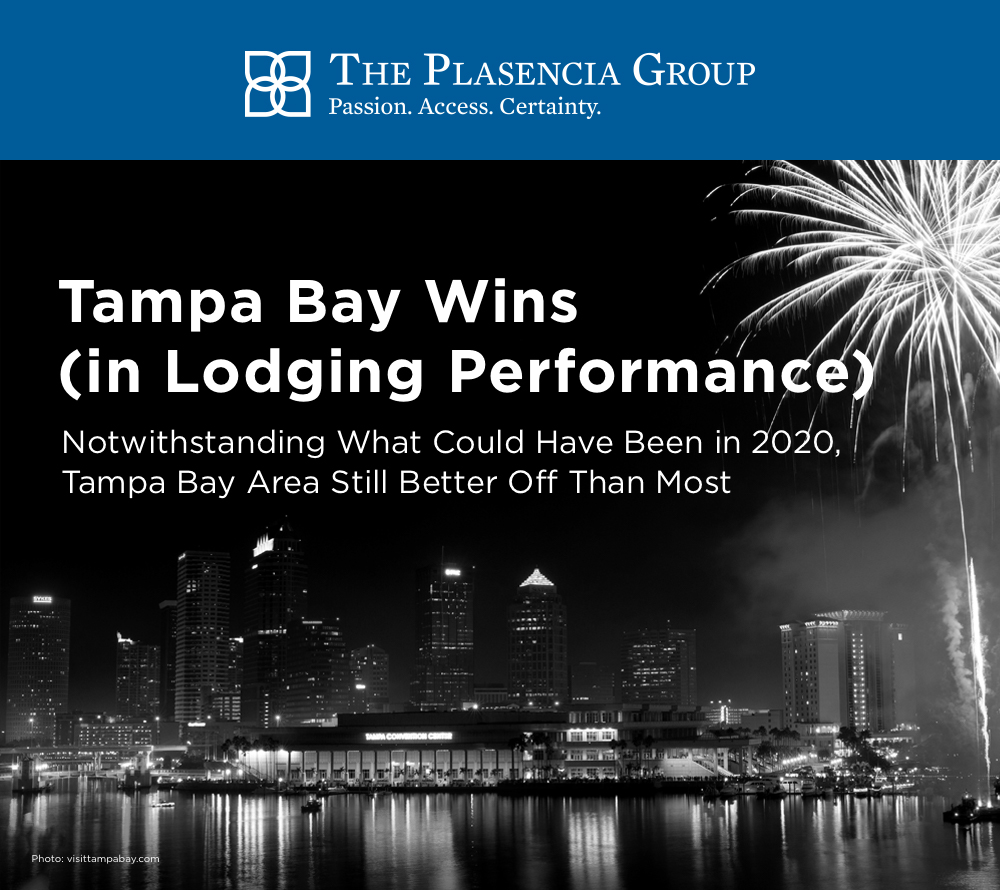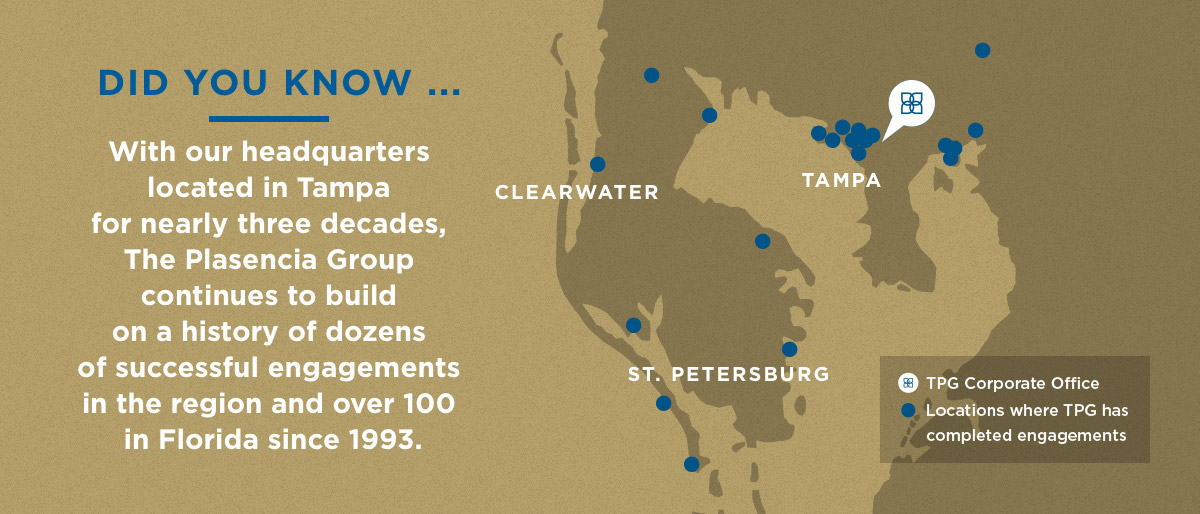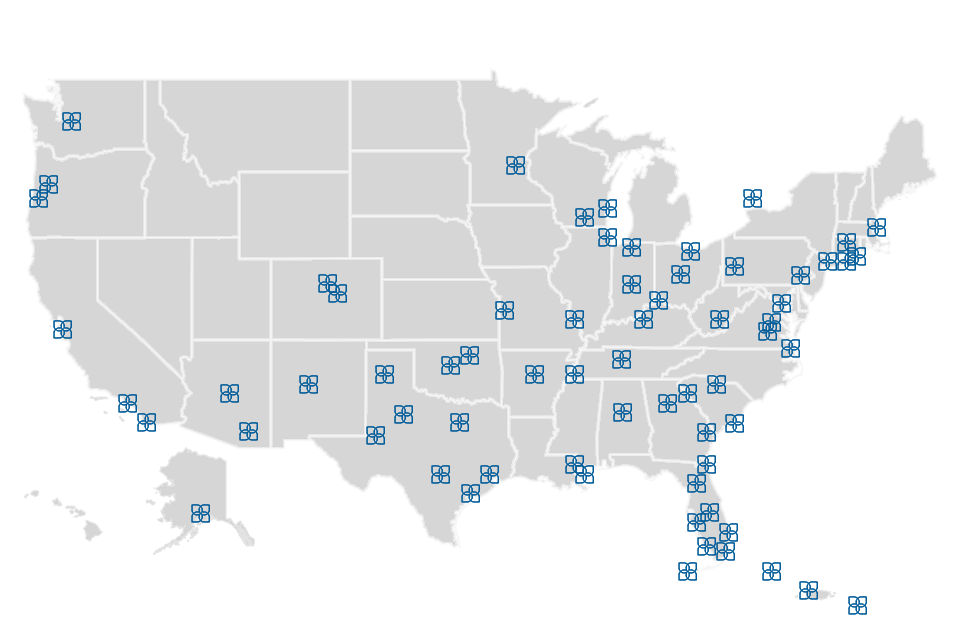
Posted February 4, 2021
The Tampa Bay Area’s lodging industry was primed for a banner year in 2020, with minimal new supply, a chock-full convention calendar, and a bevy of high-profile sporting events, including WrestleMania, March Madness, a full slate of NHL playoff games, all topped off with Super Bowl LV in early 2021. Tampa International Airport expected to see record travel, even in the midst of an ongoing expansion, and the first phase of Downtown Tampa’s Water Street development was scheduled to begin opening with much fanfare.
As with the rest of the world, all progress was brought to a screeching halt with the onset of the COVID-19 pandemic. In the months that have followed, owners and operators of Tampa Bay Area hotels have done yeoman’s work to put heads back in beds. The region has weathered the COVID storm better than most markets due to several unique factors, and numerous articles have highlighted the area’s preeminence among STR’s Top 25 markets for RevPAR performance in 2020.
Outdoor leisure activities bolster market activity
The Tampa Bay Area’s assortment of tourism-related demand drivers that anchored the market pre-pandemic positioned it for outperformance during the pandemic and ensuing lockdown, as leisure travel is the main segment of hotel demand currently available. The region’s world-class beaches, which have been accessible year-round thanks to temperate weather and a relatively mild hurricane season, continue to be the primary draw. In fact, the beaches’ prominence has only increased, as other leisure attractions like theme parks and international destinations have fallen out of favor due to pandemic concerns. Beyond the beaches, the region’s top indoor-outdoor entertainment draws, including Tampa’s Armature Works and connected Riverwalk, the burgeoning downtown St. Petersburg market, with its many museums, outdoor restaurants and brand-new St. Petersburg Pier, and the area’s renowned golf courses, are all active today while many comparable venues elsewhere remain virtually dormant. Florida’s preeminent West Coast market is also highly accessible for drive-in visitors via easy connectivity to I-75 and I-4.
Business-friendly policies prevail
The Tampa Bay Area has perennially benefited from a more moderated governmental response to the pandemic. After an initial universal lockdown, the local economy has essentially reopened. This is not to suggest that the lodging market is currently experiencing a resurgence of corporate and group travel, but there are no quarantines required for inbound travel or absolute prohibitions on small, socially distanced meetings. Professional sporting events have reopened with limited capacities. Tampa is the stage for Super Bowl LV in a few days, a rescheduled WrestleMania 37 in April, and the NBA’s Toronto Raptors, seeking a temporary home base that is open for business, have selected the warmer environs of Tampa to be their southern sanctuary during the pandemic. Further, outdoor events and activities have remained a possibility year-round. While the resultant contribution to room night demand is nowhere near what it was pre-pandemic, when paired with a steady base of leisure business, it is sufficient for most hotels to actually break even.
A promising recovery ahead
For residents of Tampa, nothing, perhaps short of the Buccaneers winning a hometown Super Bowl title, will soften the blow of missing out on a promising 2020 calendar year. That said, the market and its hotel industry are poised to be on the cutting edge of the impending recovery. To begin with, the decline, while significant, has been relatively milder than most other major hospitality markets. The local economy partook in at least several weeks of its late winter peak season before the pandemic in early 2020, padding reserves more than northern cities which were already in their typical slow period when the lockdowns began. The area’s beaches will continue to deliver meaningful leisure demand, especially as domestic airlift returns. Anticipating an outsized return in travel demand to Tampa, several carriers have opened new routes to the market, including an enhanced slate of flights to and from the Northeast. The multibillion-dollar Water Street development in Downtown Tampa will no doubt remain a generational gamechanger for the market. The JW Marriott, now open, promises to elevate the profile of the city and lure conventions that would have otherwise sought luxury-branded environs. Additionally, most hotels are in pristine condition, having renovated in the past year in preparation for Super Bowl LV.
Finally, the themes that favored the Tampa Bay Area before the COVID-19 outbreak – rapid population growth, an exceedingly friendly climate for business, an abundance of outdoor amenities – have only been emphasized by the pandemic. A surging multifamily sector has spurred a spate of high-end product delivery across the area, and new units are being quickly absorbed. An analysis of zip code changes on LinkedIn users’ accounts revealed that for every person that left the region during the period from April 2020 to October 2020, 1.47 people moved to Tampa, narrowly ranking only behind Austin, Phoenix, and Nashville nationally. The local office market, while currently plagued by historically low usage levels amidst work-from-home protocols, appears poised to soak up demand as corporations and employees in high tax and high cost of living states in the Northeast and West Coast explore alternative home bases. Most recently, Pfizer inked a sizable 105,000-square-foot lease in the Tampa Heights District, just north of Downtown. The expectation is that a number of blue-chip employers will follow over the near future.
March through December of 2020 were no doubt rife with missed opportunities for the Tampa Bay Area. That said, the market’s hotel industry has thankfully endured the pandemic better than most of the country. The region’s future remains bright.
Contact a member of our Florida-based team to discuss your investment criteria and portfolio in the Sunshine State and elsewhere.



